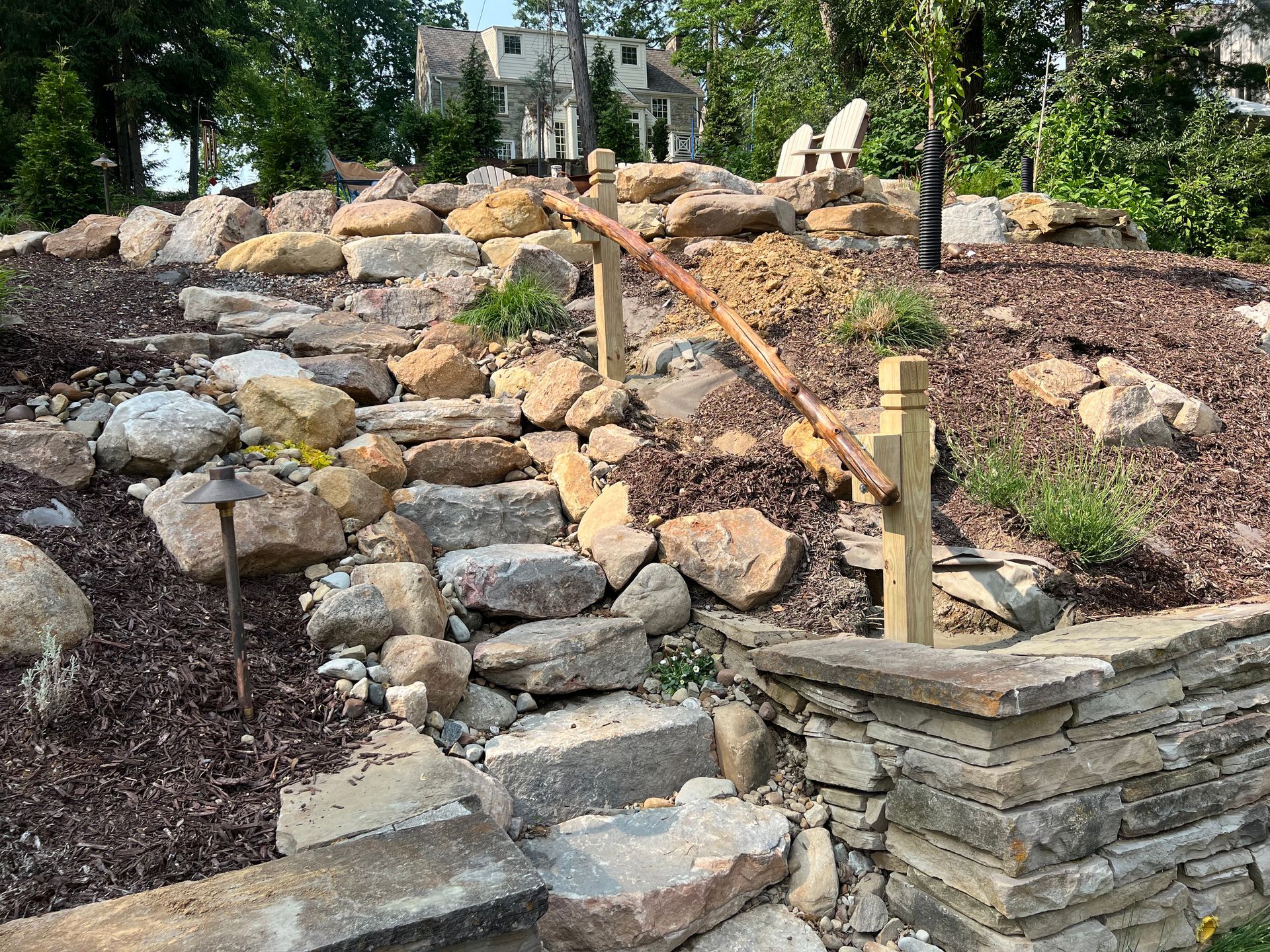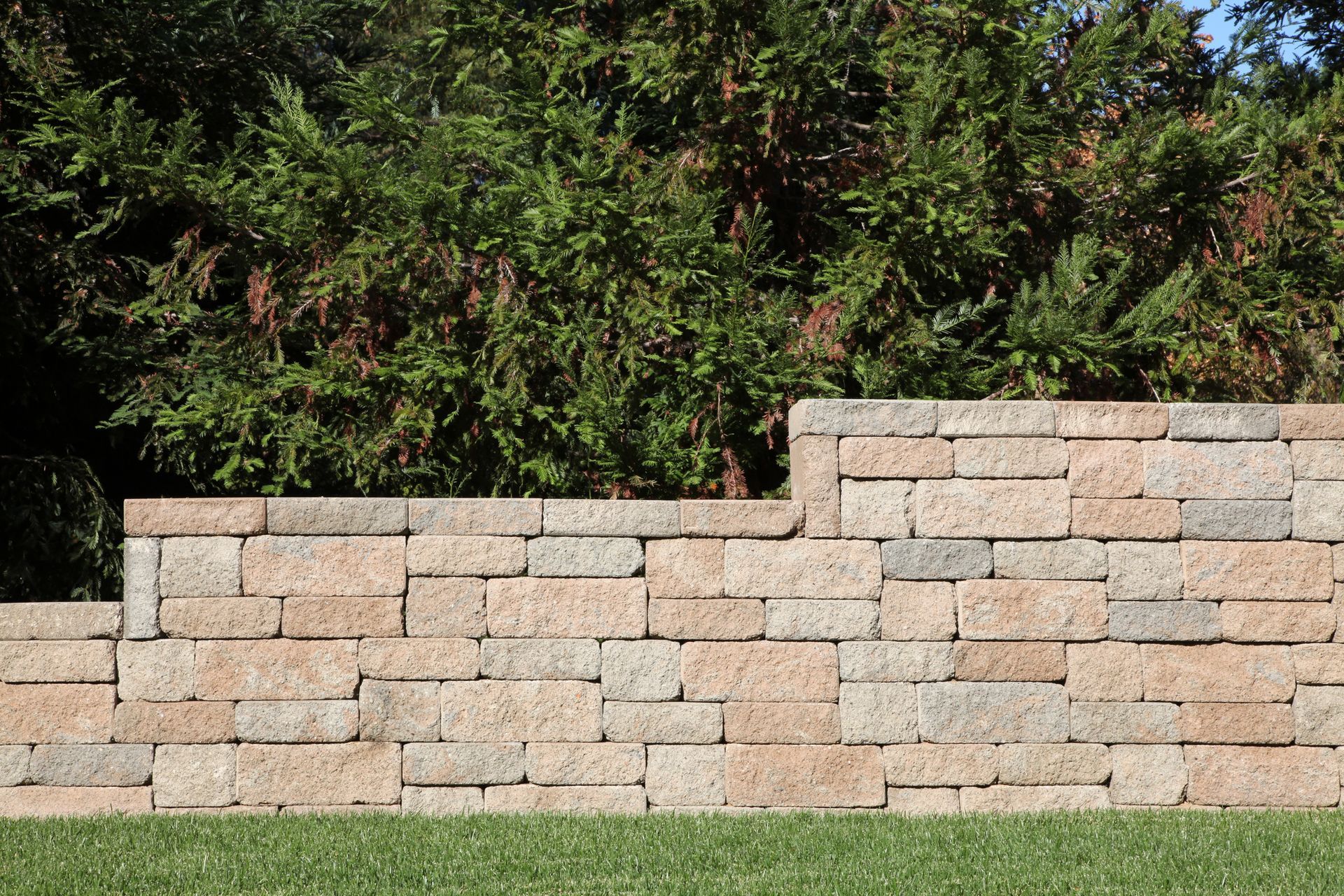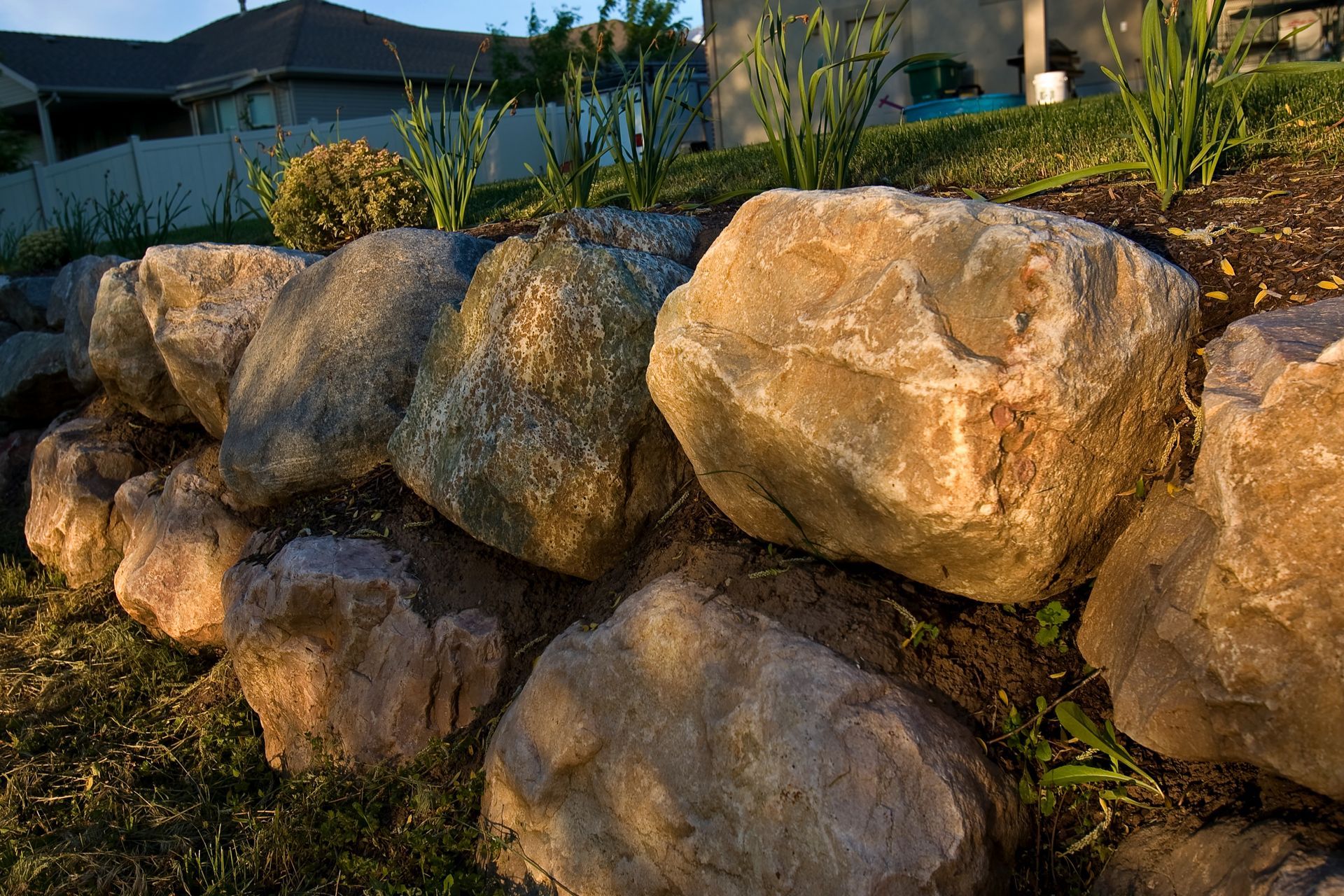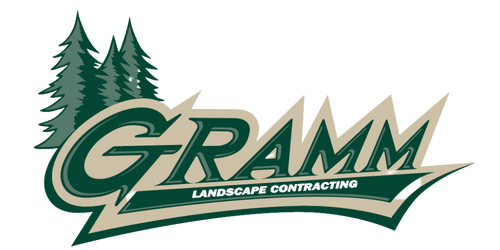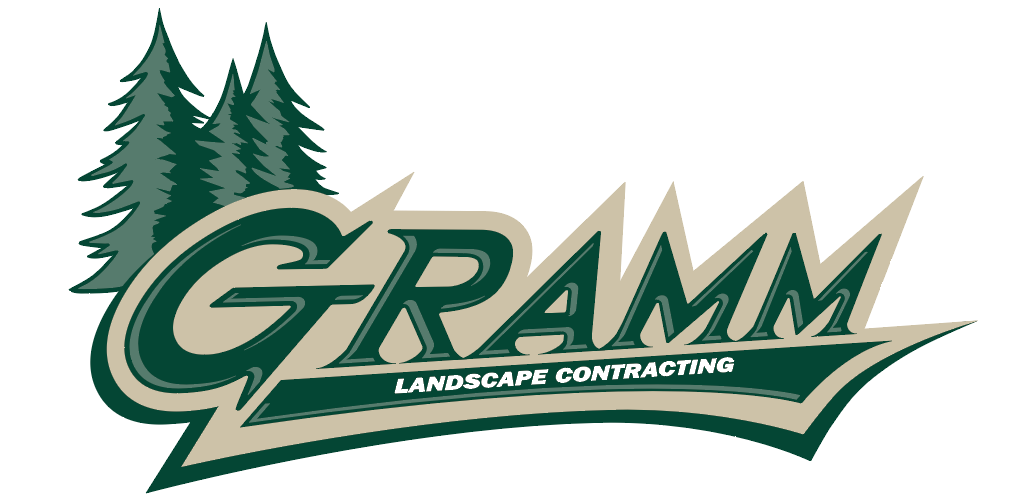Why You Should Install a French Drain Behind Retaining Walls
Retaining walls are an essential feature in many landscapes, holding back soil, leveling sloped areas, and providing structural support. However, they’re vulnerable to water damage without proper drainage, which can lead to significant structural issues. Adding a French drain behind a retaining wall is a practical, cost-effective solution to ensure long-lasting stability and function. This article explores the benefits of installing a French drain behind your retaining wall, explaining why it’s a valuable investment for any property owner.
Understanding the Role of Drainage for Retaining Walls
Drainage is crucial for maintaining the structural integrity of retaining walls. Water naturally accumulates behind the wall, especially during rainy seasons, leading to increased pressure on the structure. Known as hydrostatic pressure, this force can cause the wall to lean, crack, or even collapse over time. Proper drainage relieves this pressure by redirecting water away, ensuring that the wall remains stable and safe.
What is a French Drain?
A French drain is a type of drainage system that uses a perforated pipe surrounded by gravel to redirect water away from the wall. Installed at the base or behind the wall, it collects excess water and channels it to a designated drainage area. This prevents water from building up directly behind the wall, where it can compromise the structure. The simplicity and efficiency of a French drain make it an ideal solution for retaining walls in residential and commercial landscapes.
Key Benefits of Adding a French Drain Behind a Retaining Wall
Prevents Structural Damage
Without adequate drainage, the buildup of water exerts substantial pressure on the wall, leading to cracks and potential failure. A French drain alleviates this pressure by moving water away from the wall base, protecting it from the stresses of hydrostatic force. By preventing structural damage, a French drain ensures the wall’s long-term stability and effectiveness in holding back soil.
Improves Longevity of Retaining Wall
Retaining walls are a significant investment, and proper drainage helps them last longer. Without constant exposure to water pressure and erosion, the materials used in the wall—whether concrete, stone, or brick—remain intact for a longer period. With a French drain in place, the risk of costly repairs is minimized, allowing property owners to maximize their investment in the landscape.
Reduces Soil Erosion
Water accumulating around the retaining wall not only threatens the structure but also causes soil erosion in the surrounding landscape. A French drain directs water away from the wall, preserving the soil's integrity and maintaining the landscape's appearance. This is especially important for homeowners who have invested in landscaping features like gardens, pathways, and decorative stones, which can be damaged by water-induced erosion.
Minimizes Maintenance Costs
Preventing drainage issues before they start is one of the best ways to reduce maintenance costs. A French drain lowers the need for frequent repairs and adjustments, as it protects against water damage, soil erosion, and wall movement. For property owners, this translates to fewer long-term expenses and a hassle-free experience in maintaining the retaining wall.
How to Know If Your Retaining Wall Needs a French Drain
Signs that your retaining wall may need a drainage system include water pooling at the wall’s base, visible cracks, soil erosion around the structure, or the wall starting to lean. When these signs are present, installing a French drain can be a proactive solution to prevent further damage. Acting quickly to address drainage issues can save significant costs on repairs and preserve the wall’s integrity.
Steps for Installing a French Drain Behind Your Retaining Wall
While it’s possible to install a French drain yourself, it’s often beneficial to consult a professional, especially for complex landscapes or large retaining walls. Here’s an overview of the basic steps involved in French drain installation:
Trenching: Dig a trench behind the wall at a depth that allows water to flow away from the wall.
Laying the Pipe: Place a perforated pipe along the trench’s length, with holes facing down to capture water.
Adding Gravel: Surround the pipe with gravel, which filters water and supports drainage into the pipe.
Backfilling: Cover the gravel with soil, ensuring that the drainage area remains open for water to flow out.
Professional installation ensures that the French drain is optimally placed and functional, especially in areas with challenging soil conditions or steep slopes.
Maintaining Your French Drain for Optimal Performance
To keep your French drain functioning effectively, regular maintenance is essential. This includes clearing debris, inspecting for clogs, and checking that water flows correctly through the system. Periodic maintenance ensures that the French drain continues to protect the retaining wall from water damage, supporting its longevity and performance.
Enhancing Your Landscape with Proper Drainage
Installing a French drain behind a retaining wall is a wise investment that prevents structural damage, extends the wall's life, and minimizes maintenance costs. It protects your landscape from soil erosion, preserving the beauty and functionality of your outdoor spaces. For any property owner looking to secure their retaining wall, a French drain offers an effective solution to enhance the wall’s performance and protect their landscape.
Ready to strengthen your retaining wall? Contact Gramm Outdoor Contracting today to learn more about how our team can install a French drain to improve your landscape’s durability and beauty.

Author: Jake Gramm
Owner & Founder of Gramm Outdoor Contracting, Jake leads crew of experts in hardscaping and landscaping installations providing top notch work to the Pittsburgh area.
You might also like
